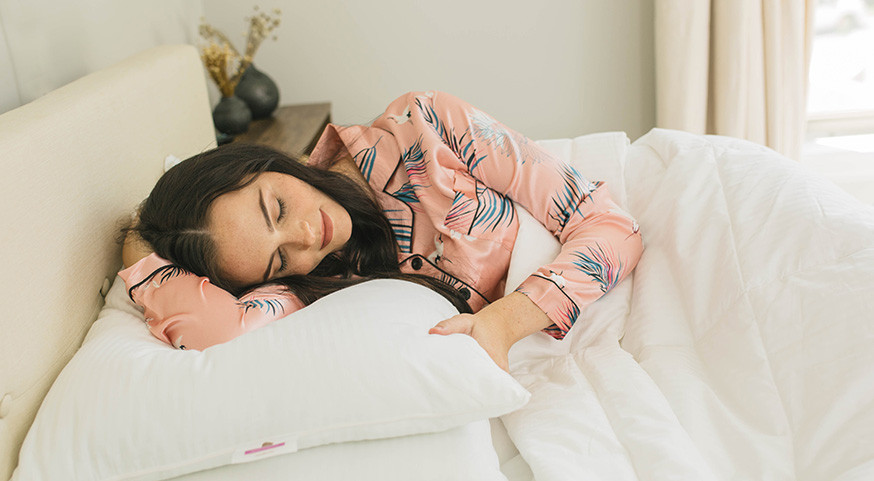Posted by Julie Carter on Jan 06, 2025
Side Sleeper Problems: 5 Common Issues and Solutions
Side sleeping is one of the most popular sleeping positions, with many people finding it the most comfortable way to catch some z's. Whether you enjoy the childlike comfort of the fetal position, the security of your arm hugging a pillow, or the snug embrace of your blanket, lying on your side offers a delightful and relaxing position to doze off. However, side sleeping can also lead to unwelcome discomfort. From neck pain to improper spinal alignment, side sleepers often encounter various problems that can impact sleep quality. We’ve identified the top five common issues side sleepers face and found practical solutions to help you get a more restful night's sleep.
Neck Pain and Stiffness
Problem: Side sleepers often wake up with neck pain and stiffness. They may fall asleep feeling comfortable and wake up in distress. This occurs when the head and neck are not adequately supported, leading to misalignment of the spine.
Solution: Invest in a supportive pillow designed for side sleepers. Side sleeper pillows are contoured to cradle your head and neck, maintaining proper alignment. Also, opt for a mattress that offers a good balance between cushioning and support.
Shoulder Pain
Problem: Side sleepers can experience shoulder pain due to the pressure exerted on one shoulder when resting on their side.
Solution: Try using a body pillow or placing a regular pillow between your knees to help align your hips and reduce pressure on your shoulders. Invest in a quality side sleeper pillow designed to elevate the head and align the neck to alleviate shoulder pressure. Choose a mattress with good support that contours to your body to relieve pressure points.
Hip Pain
Problem: Some side sleepers may suffer from hip pain, either from the pressure of the bottom hip pressing into the mattress or the gravity of the upper hip being pulled in an unnatural position all night.
Solution: Sleep with a medium pillow between your legs to reduce pressure on your upper hip. Take time to stretch before bed and in the morning. Try to change positions throughout the night to equalize the body. Placing a soft mattress topper on your bed can also help reduce pressure on your hips.
Numbness and Tingling
Problem: Side sleepers may experience numbness and tingling in their arms or legs, often caused by poor circulation when resting on one side for an extended period.
Solution: To improve circulation, alternate sides during the night. Use a firmer mattress that supports your body and helps distribute your weight evenly. Stretch before bedtime to release muscle tension that might contribute to numbness.
Acne and Wrinkles
Problem: Side sleeping can exacerbate acne, wrinkles, puffy eyes, deep lines, and clogged pores. When you sleep on your side, your face is pressed against a pillow, causing the skin to fold, form wrinkles, and provoke pimples.
Solution: Use a silk or satin pillowcase, which reduces the friction that leads to wrinkles and breakouts. Use a supportive side sleeper pillow that cradles the head and neck without putting too much pressure on the delicate skin of the face. Be sure to wash your face and moisturize at least twice a day to keep your pores clean and your skin nourished.
In conclusion, side sleeping is popular and comfortable but comes with its fair share of issues. By choosing the right pillows, mattresses, and sleep accessories and paying attention to your overall sleep environment, you can mitigate these problems and enjoy a restful night's sleep as a side sleeper. Individual preferences vary, so it might take some trial and error to find the perfect combination that works for you. By making these adjustments, you'll be well on your way to side sleeping bliss and waking up feeling refreshed, pain-free, and looking your best.





